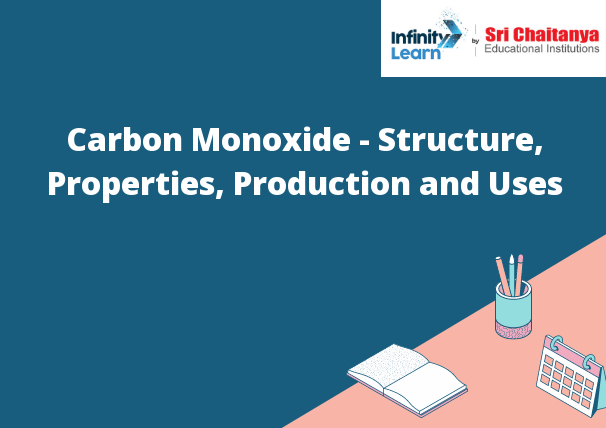Table of Contents
What is Carbon Monoxide?
Carbon Monoxide – Structure: Carbon monoxide is a gas that is produced when carbon-containing fuels, such as gasoline, coal, wood, or natural gas, are burned. It is a colorless, odorless, and tasteless gas, and can be very dangerous, as it can cause death by suffocation.

Carbon Monoxide and its Various Properties
Carbon monoxide is a colorless, odorless, and tasteless gas that is slightly less dense than air. It is toxic to humans and animals because it displaces oxygen in the blood, preventing the body from getting the oxygen it needs. Carbon monoxide is produced when fuels such as coal, oil, natural gas, and wood do not burn completely. It can also be produced by automobile exhaust, gas stoves, and tobacco smoke.
Structure of Carbon Monoxide or CO
Carbon monoxide is a molecule composed of one carbon atom and one oxygen atom. The carbon atom is bonded to the oxygen atom by a double bond, which gives the molecule a bent shape. Carbon monoxide is a colorless, odorless gas that is slightly less dense than air. It is toxic to humans and animals, and can cause severe health problems.
Properties of an ideal gas
An ideal gas is a theoretical gas composed of particles that do not interact with each other. These particles are considered to be point masses and have no volume. In addition, the ideal gas is assumed to have a constant temperature and pressure.
Uses of CO (Carbon Monoxide)
1. As a fuel
2. In metal production
3. In the manufacture of chemicals
4. As a refrigerant
5. In the production of plastics
6. As a colorant
7. In the production of synthetic fibers
8. In the treatment of water
Toxicity of Carbon Monoxide
The toxicity of carbon monoxide is due to its ability to bind to hemoglobin, preventing the release of oxygen to the tissues. Carbon monoxide is also a neurotoxin, meaning that it can damage the brain and nervous system. Symptoms of carbon monoxide poisoning include headache, dizziness, nausea, vomiting, and confusion. In severe cases, carbon monoxide poisoning can lead to death.
Key Concepts in Context to which Carbon Monoxide Can Be Studied
- Carbon monoxide can be studied in the contexts of environmental science, public health, and engineering.
- In environmental science, carbon monoxide can be studied as a component of air pollution. It is a major component of smog, and can cause health problems for people who are exposed to it.
- In public health, carbon monoxide can be studied as a major cause of poisoning. It is a colorless, odorless gas that can be deadly in high concentrations.
- In engineering, carbon monoxide can be studied as a component of fuel combustion. It is produced when any fuel is burned, and can cause problems in engines and other machinery.








